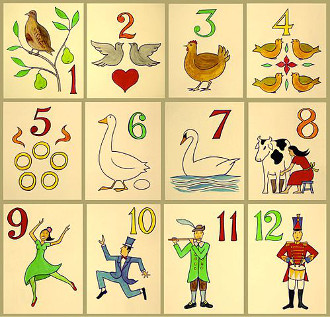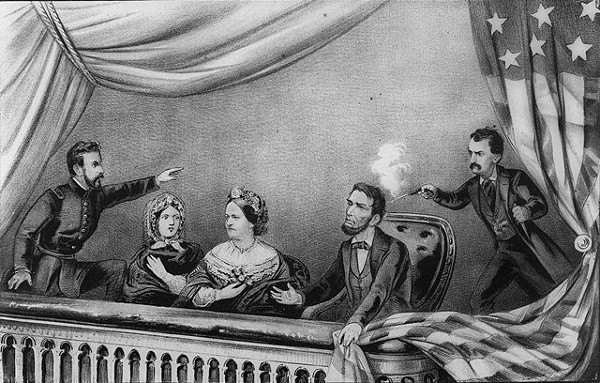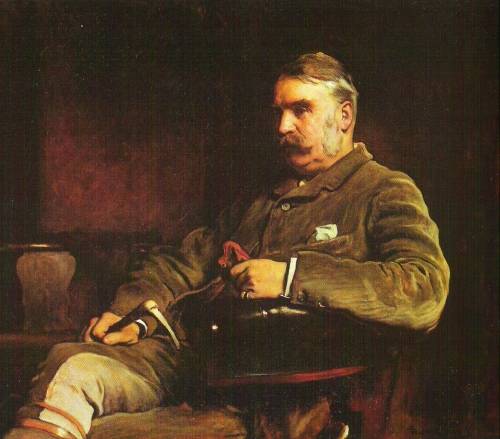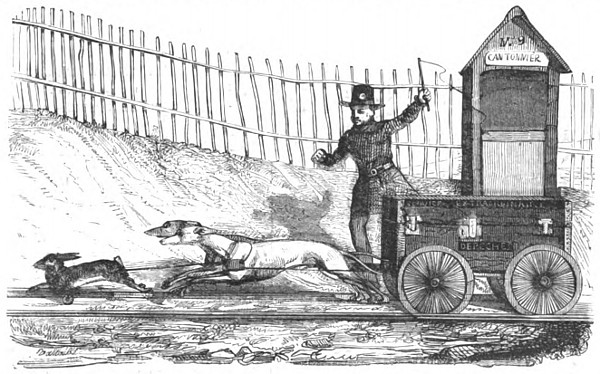
A fair die bearing the numbers 1, 2, 3, 4, 5, 6 is repeatedly thrown until the running total first exceeds 12. What’s the most likely total that will be obtained?

A fair die bearing the numbers 1, 2, 3, 4, 5, 6 is repeatedly thrown until the running total first exceeds 12. What’s the most likely total that will be obtained?
Lewis Carroll sent this poem to Mabel and Emily Kerr on May 20, 1871. He titled it “A Double Acrostic” — but where is the acrostic?
Thanks, thanks, fair Cousins, for your gift
So swiftly borne to Albion’s isle —
Though angry waves their crests uplift
Between our shores, for many a league!
(“So far, so good,” you say: “but how
Your Cousins?” Let me tell you, Madam.
We’re both descended, you’ll allow,
From one great-great-great-grandsire, Noah.)
Your picture shall adorn the book
That’s bound, so neatly and moroccoly,
With that bright green which every cook
Delights to see in beds of cauliflower.
The carte is very good, but pray
Send me the larger one as well!
“A cool request!” I hear you say.
“Give him an inch, he takes an acre!
“But we’ll be generous because
We well remember, in the story,
How good and gentle Alice was,
The day she argued with the Parrot!”
Lewis Carroll
The last word in each stanza is a red herring. Replace each with the proper rhyme and then list these five words:
Mile
Adam
Broccoli
Ell
Lory
Their first and last letters spell MABEL and EMILY.

In December 2001, mathematician Bill Richardson received a call from a television producer asking for a formula that would reveal the total number of gifts given for any specified day in the song “The Twelve Days of Christmas.” He worked out that the total number of presents given on each day is a triangular number:
1
1 + 2
1 + 2 + 3
1 + 2 + 3 + 4
And so the cumulative total is the sum of triangular numbers:
1
1 + 3
1 + 3 + 6
1 + 3 + 6 + 10
So if Pn is the total number of presents given in the first n days, then
which works out to
“which is an elegant result,” Richardson writes. “So, the lucky girl received 1/6 × 12 × 13 × 14 = 364 presents in total. She should have had a very happy Christmas!”
(Bill Richardson, “The Twelve Days of Christmas,” Mathematical Gazette 86:507 [November 2002], 468.)

In 2001, when its NEAR Shoemaker space probe landed on asteroid 433 Eros, NASA received a $20 parking ticket from Gregory W. Nemitz, who had claimed ownership of the asteroid 11 months earlier.
There followed a slowly escalating legal war. NASA’s lawyer told Nemitz that his claim appeared to have no foundation in law, so he appealed to the State Department, which agreed that his claim was without legal basis. Nemitz demanded a federal jury trial for “breach of implied contract.” The case was dismissed, but Nemitz still asked for a declaratory judgement concerning his right to own private property in space. The court dismissed his claim in 2005.
Proponents argue that only property rights in space will motivate entrepreneurs to pursue exploration. “Space development and settlement will not happen if it’s internationally taxed and controlled,” attorney Wayne White told the San Francisco Chronicle in 2005. “I think space settlement is a social ‘release valve’ that we desperately need. … It’s only going to get more crowded here on Earth.”

Before steam power became widespread, some locomotives were powered by horses on treadmills. This version, dubbed Impulsoria by Italian inventor Clemente Masserano, was driven by four horses that walked continuously at their best speed; a gearbox could be set to forward, reverse, or neutral.
The “horse locomotive” successfully climbed a hill at trials in London in 1850 and was displayed at the Great Exhibition the following year. It was hoped that a final version might reach 20 mph, outrunning the steam engines of the day, but mechanical engines soon surpassed it.

The last surviving person to witness Lincoln’s assassination died in 1956. Samuel J. Seymour, born in 1860, was 5 years old when his godmother took him to see Our American Cousin at Ford’s Theatre on April 14, 1865.
They sat opposite the president’s box, which was draped with flags, and she lifted him up when Lincoln entered. “He was a tall, stern-looking man,” Seymour told the Milwaukee Sentinel in 1954. “I guess I just thought he looked stern because of his whiskers, because he was smiling and waving to the crowd.”
The play began and “all of a sudden a shot rang out — a shot that always will be remembered — and someone in the president’s box screamed. I saw Lincoln slumped forward in his seat.” The crowd began to stir and Seymour saw the assassin John Wilkes Booth tumble over the balcony rail and land on the stage. He called, “Hurry, hurry, let’s go help the poor man who fell down.”
Lincoln died the following morning, and the fleeing Booth was killed 12 days later. Seymour carried the memory of the experience with him for 90 years, until his death on April 12, 1956, at age 96. “That night I was shot 50 times, at least, in my dreams — and I sometimes still relive the horror of Lincoln’s assassination, dozing in my rocker as an old codger like me is bound to do.”
02/19/2016 UPDATE: In February 1956, two months before his death, Seymour appeared on the American game show I’ve Got a Secret, where contestants had to guess his claim to notability:
(Thanks, Andrew.)

perstringe
v. to criticize
dispendious
adj. costly
connictation
n. a twinkling or winking with the eye
An example of the quick wit of W.S. Gilbert, from actor Rutland Barrington’s 1908 memoir:
“On one occasion, when rehearsing Pinafore, he said, ‘Cross left on that speech, I think, Barrington, and sit on the skylight over the saloon pensively.’ I did so, but the stage carpenter had only sewn the thing together with packthread, and when I sat on it it collapsed entirely, whereupon he said like lightning, ‘That’s expensively!'”

This drawing appeared in L’Illustration in May 1845 — it’s a “caniposte” railway that allegedly was used to carry express mail in Belgium. Two dogs are harnessed to a small wagon that runs on a narrow-gauge railway. They chase a stuffed hare, or, in “improved models,” a piece of raw meat.
Was this ever really used? “Despite evidence of the drawing, one has doubts!” writes J.R. Day in More Unusual Railways (1960). “Nevertheless the author has seen a large dog drawing a small cart in the streets of Salzburg, so perhaps it is not so unlikely after all.”
02/18/2016 UPDATE: A reader in Bruges tracked down the original story and offers some details:
Two ‘eccentric’ Brits apparently found associates for the construction of such a railway, meant for the transport of fresh fish from the seaport of Blankenberge to Bruges (some 12 km or 7.5 miles). The standard configuration would have been 4 hungry dogs, 2 barrels of fish and one piece of meat hung out in front; a different one (depicted) would consist of 2 hungry dogs, express mail and a motorized (‘dead or stuffed’) hare.
The railway was proposed but never actually built. ‘Some will consider it barbaric, other deem it impossible, and everyone will find it ridiculous; but people wil get used to it, and very soon one will wonder how we never thought of it any earlier.’
(Thanks, Karl.)
If we’re given 32 stones, each a different weight, how can we find both the heaviest and the second heaviest stone in 35 weighings with an equal-arm balance?

Seeing the earth from a distance has changed my perception of the solar system as well. Ever since Copernicus’ theory (that the earth was a satellite of the sun, instead of vice versa) gained wide acceptance, men have considered it an irrefutable truth; yet I submit that we still cling emotionally to the pre-Copernican, or Ptolemaic, notion that the earth is the center of everything. The sun comes up at dawn and goes down at dusk, right? Or as the radio commercial describes sunset: ‘When the sun just goes away from the sky …’ Baloney. The sun doesn’t rise or fall: it doesn’t move, it just sits there, and we rotate in front of it. … Everyone knows that, but I really see it now. No longer do I drive down a highway and wish the blinding sun would set; instead I wish we could speed up our rotation a bit and wing around into the shadows more quickly. I do not have to force myself to call this image to mind; it is there, and occasionally, I use it for other things, although admittedly I have to stretch a bit. ‘What a pretty day’ makes me think that it’s always a pretty day somewhere; if not here, then we just happen to be standing in the wrong place. ‘My watch is fast’ translated into no, it’s not, it’s just that you should be standing farther to the east.
— Astronaut Michael Collins, Carrying the Fire, 1975